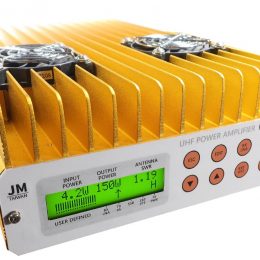Products & Product Reviews
As we’ve mentioned in previous posts, the 2023 edition of the DX Engineering Amateur Radio Products Catalog has been released. If you haven’t received your copy, you can order it […]
Products & Product Reviews
Editor’s Note: Troy Blair, KE8DRR, DX Engineering customer/technical support specialist, enjoys sharing personal stories about his involvement in amateur radio so others can learn from his experiences in the true spirit […]
Antenna Tech / Technical Articles
Next to wires, antennas made of aluminum tubing and rod are the most common type of amateur radio antenna construction. There is a wide range of high-quality aluminum alloy available, […]
Technical Articles
If you have ever stood at the base of a tower, looking forlornly upward, wondering “What’s WRONG with that [adjective] rotator?!” you are not alone. That simple piece of gear […]
HAM Radio 101
On February 23, 2007, the FCC eliminated the Morse code requirement for all U.S.-issued amateur licenses. Within 72 hours of the announcement, the American Radio Relay League (ARRL) staff reported […]
EMCOMM / Technical Articles
Are you prepared for an emergency? During and after an emergency, you (and possibly your family) may need to survive on your own for an undetermined amount of time. Being […]
Antenna Tech / Technical Articles
Here are just a few tips on what to do when assembling a new antenna. The suggestions hold true for both vertical and horizontal antennas. This is a basic information […]
Products & Product Reviews
The new 2021 DX Engineering catalog features 132 pages of amateur radio heaven, from brand-new products like the DX Engineering NOISELOOP Portable Receive Flag Antenna Kit and Preamplifier to devices […]
Technical Articles
It’s common to experience interference from a nearby broadcast station, including commercial and public safety transmitters. The usual symptom is a continuous stream of distorted audio on all channels or […]
Antenna Tech / Technical Articles
Mother Nature must like Ham operators. We’ve been provided with an abundance of tall, non-conductive antenna supports—aka trees—which grow and flourish on their own. When it comes to wire antennas, […]









